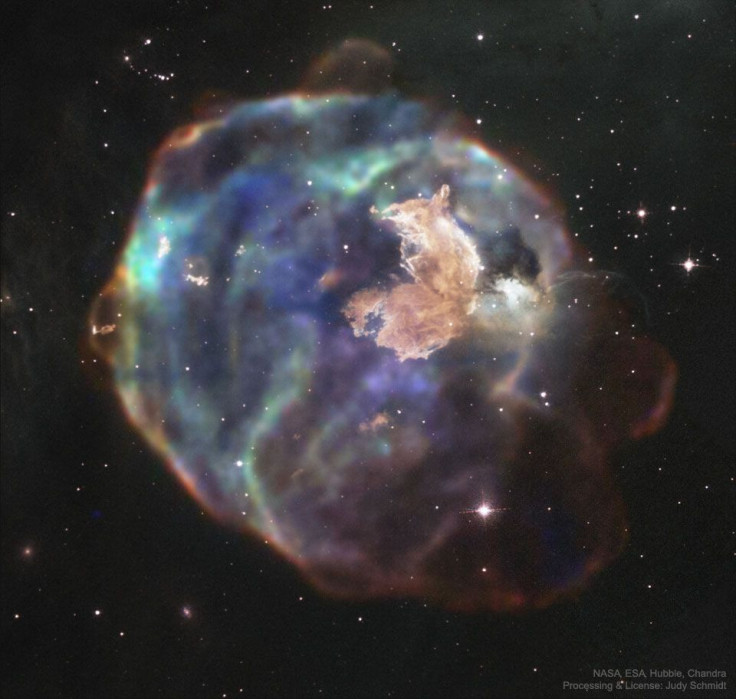NASA Shares Photo Of Supernova Remnant Rampaging Near Earth’s Neighborhood

KEY POINTS
- NASA's Chandra Space Telescope photographed a supernova remnant
- N63A was created by a star that collapsed and exploded
- N63A is creating new stars that could cause future supernova events
NASA recently shared a stunning photo of a massive supernova remnant located in Milky Way’s neighboring galaxy. According to the agency, this supernova remnant is continuously expanding and destroying its surroundings.
The massive cosmic object featured in NASA’s photo has been identified as a supernova remnant known as N63A. It lies within the Dorado constellation and is about 150,000 light-years away from Earth. It was photographed using the X-ray imaging capabilities of NASA’s Chandra Space Telescope.
N63A illustrates the aftermath of an explosion caused by a massive star. As the star reached the end of its life cycle, it stopped producing energy, causing it to collapse under the weight of its own gravity. The intensity of its collapse caused the star to explode, resulting in a massive supernova.
According to astronomer Robert Nemiroff, the star that created the N63A supernova remnant came from the Large Magellanic Cloud (LMC), a galaxy that’s located near Earth’s neighborhood Milky Way. He noted that the explosion caused by the star was so powerful that the light it emitted once reached Earth.
Nemiroff explained that despite happening thousands of years ago, N63A is still continuously expanding. As it continues to do so, it disrupts and destroys nearby cosmic clouds filled with gas.
“As little as 2,000 years ago, light from a massive stellar explosion in the Large Magellanic Cloud (LMC) first reached planet Earth,” the astronomer explained in a statement. “The LMC is a close galactic neighbor of our Milky Way Galaxy and the rampaging explosion front is now seen moving out - destroying or displacing ambient gas clouds while leaving behind relatively dense knots of gas and dust.”
According to Nemiroff, the knots of cosmic materials made by the supernova remnant create ideal conditions for new stars to form within N63A. Like the star that created N63A, the newborn stars will eventually grow old and explode, causing another series of supernovae.
“Many of the surviving dense knots have been themselves compressed and may further contract to form new stars,” he explained. “Some of the resulting stars may then explode in a supernova, continuing the cycle.”
© Copyright IBTimes 2025. All rights reserved.





















